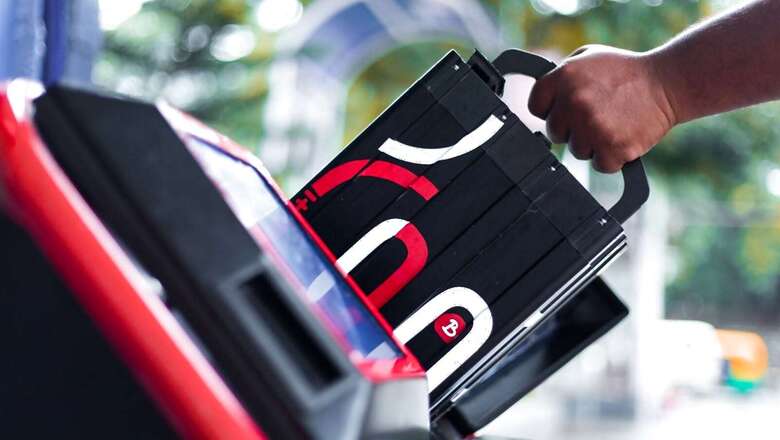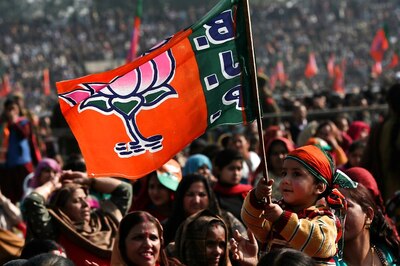
views
In telecommunication, India lagged to adopt newer technology. However, once the technology entered India, it disrupted the market, making India the world’s largest and cheapest telecom market, with world-class infrastructure and connectivity. India, today, is amongst the largest telecom markets in the world with over a billion subscribers and more than 80% mobile penetration.
Similarly, Electric Vehicles (EVs) picked up in India 2021 onwards, with catapulted support from the much-strategized FAME II. On an average, India accounts for more than 1.5M new 2wheeler (2w) retail sales every month, which is around 80% of overall automotive sales. Therefore, it is of paramount importance to transition to clean mobility. In terms of oil dependency, 2ws are responsible for around 62% of total petrol demand in India. With focused policy interventions and emerging technologies in the space of EVs, innovative business models will lead the transition and disrupt traditional markets. We believe that fixed and removable battery vehicles will co-exist and lead to accelerated adoption of e-2Ws.
Of all the electric vehicles sold in the country, currently, battery swappable vehicles, new vehicles, not the retrofitted ones, are limited. Hence, this is the right time to bring in synergy and provide a level-playing field to accelerate the proliferation of battery swapping in the automobile market.
Battery swapping simply means that vehicle and battery ownership is decoupled.
What does it mean for the consumer?
It drastically reduces the upfront cost of the vehicle, almost by half. i.e., for the consumer the price of the vehicle is halved. Moreover, the risk of technology obsolescence is eliminated completely, and safety is ensured (batteries shall be charged in controlled environment with regular check on all their health parameters). Consumers have a wider portfolio of models to pick from, one that suits their style and needs. A subscription-based model provides flexibility to the consumer to opt for the best technology being offered at the best price, similar to the telecom services where a user chose a service provider on the basis of connectivity and has the option to switch as per the quality of service. It is a time-saving proposition as it reduces the time to charge the vehicle. The battery swapping ecosystem will also enable access to finance with shared responsibility of assets amongst the consumers, battery service providers, and OEMs (original equipment manufacturers).
What does it mean for the industry?
At present, this industry is almost non-existent and fragmented. The Indian consumer and conditions are totally different in behavioural terms i.e., driving, range requirement, and gig workers’ requirement, as well as operational terms. Therefore, its success is unsure unless local testing is extensively done, and learning is developed accordingly.
What does it mean for the government?
It is a golden chance to do the following:
Rural, tier-1 and tier-2 cities can be provided with green means of transportation, which has minimum maintenance requirement and becomes inexpensive without batteries.
Solar and wind power can be used in a decentralised manner for swapping stations to charge these batteries, that is, as and when power is available. Thereby, dependence on fossil fuels will decrease.
Leveraging time of the day, DISCOMs can alter the power supplied to these swapping stations, as batteries are always getting charged, thereby balancing the peaks.
Safety is ensured as batteries are always charged under controlled conditions, and whenever it is in the vehicle the parameters are monitored in real-time basis by CPOs. This also can shut down the battery through BMS/IoT, if malfunction is sensed.
Technology upgrades: Advanced battery technology is still evolving, hence, consumer will get the upgrade, quite similar to the way sim-cards are upgraded to 3G, 4G, 5G, etc. It would ensure increased power and life in the same battery without incurring extra cost or risk.
Recycling: Since each and every battery will be tracked and these will be returned to the CPOs, it will ensure that there’s not a single automotive advanced battery, which ends up in the landfill.
Promote the innovative Battery as a Service (BaaS) business model, which will provide new avenues for the startup ecosystem, and boost employment in the country.
Back to Grid Power: In case of emergencies, the power stored in batteries at swap stations can be utilised (vehicle to grid concept; like California, USA).
However, all of this would be possible only if the swappable batteries are interoperable at the discharge stage in the least. Let us try and understand the case of interoperability by simple reasoning: For instance, a consumer lives in Noida and buys a vehicle without battery and takes battery subscription from the battery OEM / CPO, whose services and subscription are best-suited for his/her needs. If the consumer shifts to another city, for example Gurgaon, and is unable to find a battery swapping station of his/her subscribed service provider, the consumer is left with the option of either selling the vehicle or waiting for the operator to start services in that area, or buying a new vehicle.
Also, no interoperability will lead to limited flexibility for the consumer to choose between battery swapping operators, as the first movers would already have built a monopoly by building tie-ups with OEMs, at the initial stage itself. Also, since the consumer is stuck with one operator, the operator will determine the subscription price, and the consumer will have no option but to adhere to it, unlike sim-cards, where it is easy to shift from one operator to the other, moreover, all sim-cards are of the same size.
It vividly paints a picture of inconvenience for the consumers. Therefore, a mechanism to deal with these issues, needs to be built at this stage itself. At a later stage, once resources are exhausted, assets are deployed and money is spent, this change won’t be logical or possible.
As far as innovation is concerned, cell dimensions can vary, however, outer battery pack dimensions need to be fixed. Outer dimensions can be managed by the battery assemblers without altering the cell’s form. Anyway, none of the battery assemblers in India manufacture the cell, they only assemble imported cells. Also, if we take the example of one of the most successful battery swapping operators in another country, it can be observed that in the same battery dimension they have doubled the battery range, and have announced to increase it even more in the future. This is a great way to maximise asset utilisation, with minimum asset deployment.
Having said that, the battery size should not be made mandatory for all but be limited to the ecosystem initially nudged by public funding.
The proliferation of battery swapping will be a significant contributor to GoI’s COP 26 targets, including decarbonization of the power sector i.e., utilising ToD and renewable energy for charging batteries at swap stations. Further, it will also help India reduce the dependence on import of oil and battery raw materials (policy focuses on repurposing and recycling the batteries) This will, in turn, help in reducing the dependence on oil import, and also the import of battery raw materials (higher asset utilization as well as completer recycling of the batteries). Financing options are easy to build, as ownership of the vehicle is to be financed at 50% the cost (without battery), minimum technology risk, and negligible maintenance, in comparison with ICEs. Batteries will be taken care of, by better funded OEMs and CPOs. Entrepreneurship will evolve as battery swapping with mini modules (2-4 battery swap packs) will be made available at kiranas, or pan shops.
Undoubtedly, the benefits of battery swapping as an alternative can only be accrued if the industry supports the transition in a fair manner, and establishes an ecosystem that focuses on consumer’s needs, safety and convenience.
Randheer Singh is director of e-mobility at NITI Aayog, and Diewakarr Mittal is young professional at NITI Aayog. The views expressed in this article are those of the authors and do not represent the stand of this publication.
Read all the Latest News , Breaking News , watch Top Videos and Live TV here.

















Comments
0 comment